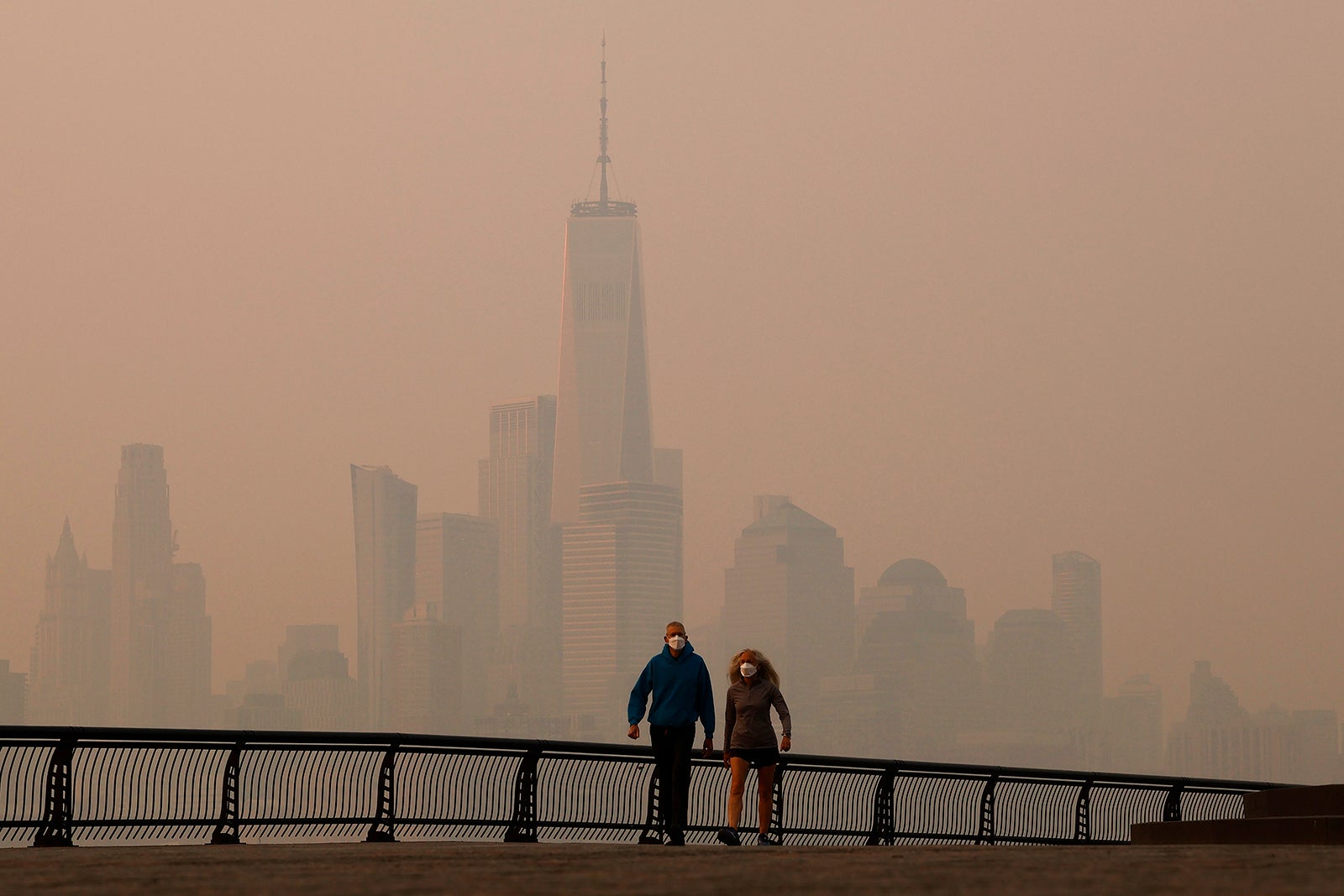Flights across the Northeast and beyond were delayed for a second day Thursday as smoke from wildfires in Canada choked much of the eastern U.S. in a thick, unhealthy haze.
The Federal Aviation Administration warned early Thursday morning that it was expecting to restrict the flow of aircraft into and out of busy East Coast hubs in New York City; Washington, D.C.; Philadelphia; and Charlotte at points throughout the day. By 7:45 a.m. EDT, the agency briefly paused all departing flights bound for New York’s LaGuardia Airport (LGA) from the mid-Atlantic, Ohio and the Northeast.

Want more airline-specific news? Sign up for TPG’s free biweekly Aviation newsletter.
Over the course of Thursday morning, the FAA ordered similar traffic throttles for flights to Philadelphia International Airport (PHL) and Newark Liberty International Airport (EWR).
By 1 p.m. EDT, flights to Philadelphia had resumed; traffic management initiatives remained in place, slowing departures to LaGuardia and Newark, with delays averaging 34 to 55 minutes, according to the FAA. About 1,710 U.S. flights had been delayed, according to data from FlightAware.
Even so, the impact was relatively muted: The vast majority of flights were still operating on time, the FlightAware data showed. United Airlines had delayed 168 flights, or 6% of its schedule, and canceled 22 — a statistical 0%. Delta Air Lines delayed 185 and canceled four; Southwest Airlines delayed 272 and canceled three. New York-based JetBlue Airways delayed 152 flights (15%). Delay numbers were not immediately available for American Airlines, which operates hubs in all affected regions listed by the FAA; it had not canceled any flights as of 1 p.m. EDT.
Although pilots can fly during poor visibility by using instruments and navigational aids, flights are typically spaced further apart than normal as an extra layer of safety. The instruments can be less precise through smoke or other particulate matter than through fog, clouds and rain, so planes need to be spaced even further, the FAA said in a video update.
Cities down the Eastern Seaboard from Boston to Washington, D.C., were experiencing poor air quality Thursday afternoon. States as far south and west as Louisiana, Oklahoma and the Dakotas saw some impact from the blowing smoke. Washington and the surrounding area were the places most heavily affected, and listed as having a “very unhealthy” air quality index according to federal data.
In New York City, which had the worst air quality Wednesday amid an orange-tinted shroud of smoke, city officials urged residents to stay indoors. The fire department offered free N95 masks for those who had to leave their homes, and public schools said that classes would be held remotely Friday. From New York to Washington, sports games, parades, fairs and more were postponed.



